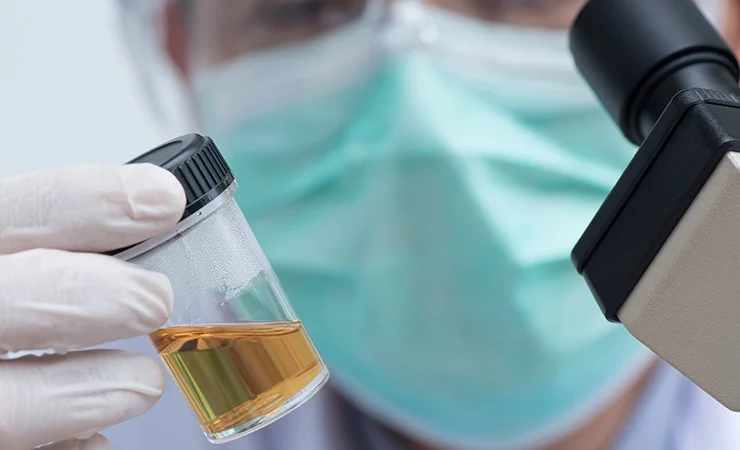What is the Success Rate of Drug Rehab in Canada?
Addiction can happen in various instances. And one of its most serious forms is drug addiction. The prevalence of this addiction is evident in different statistics from corresponding surveys. But a statistic people struggle to find is drug rehab success rate.
For you or a loved one looking to get into rehab, it’s only normal to try evaluating the possibility that rehab can help you recover. But unfortunately, it’s 2022 and one can’t still easily determine the success rate/statistics in drug rehab. This assertion is because drugs in use, level of usage, and treatment methods differ.
Also, some people regard relapse as a rehab failure. Is it so? In subsequent parts of this article, we’ll not only answer this question. But we’ll also touch on salient points regarding Canada’s drug rehab success rate.
Let’s get it!
Drug Rehab Success Rate in Canada
In the medical field, addiction categorizes as a substance use imbalance. And it’s, in fact, a debilitating, lifelong illness. It’s treated similarly to other chronic conditions like diabetes which have only treatments but no cure.
Unlike hypertension, which BP tests can track, addiction affects the brain rather than the body’s physiological processes, making it more challenging to measure progress. To keep tabs on a patient’s progress during addiction therapy, it’s common practice to inquire about their mood and thoughts.
Due to the lack of a consensus on what constitutes successful therapy, individual rehab facilities must develop their metrics for success. A patient may, for instance, cease abusing drugs but continue to engage in self-destructive activities and cognitive processes even after receiving treatment.
Therefore, finding a reliable and trustworthy institution that focuses on the fullness of patients rather than just their drug addiction is crucial for a successful recovery.
Determining Effectiveness of Addiction Treatment
Different governmental bodies give different perspectives on what treatment is to do. However, success is defined differently by different rehab facilities.
The generally acceptable signs that indicate a patient is making progress in their addiction treatment include:
- Addiction decreases in intensity and frequency, with more time passing between relapses.
- Better employment or school attendance
- A reduced number of doctor’s visits indicates better physical health.
- Improvements in mood, demeanour, and conduct are signs of better mental health.
- Improved connections with those you care about
- Better compliance with the law, either through fewer offences or the completion of probation.
- Reduced risk of harm, as in, fewer injuries and accidents
A good rehab center determines each patient’s progress through treatment using frequent recovery measurements. These checks flag any relapses so rehab staff can address new problems as soon as possible.
A competent rehab continues to support its patients long after treatment has concluded by providing alumni groups, recovery meetings, and patient access.
Relapse Is Not an Indication of Failed Rehab Efforts
A return to substance abuse is an expected aspect of the healing process. New beginnings, long-term sobriety, and a more balanced outlook on life are all part of the process of recovery. Even if you make a mistake, your efforts won’t be a waste.
Other chronic diseases, such as diabetes and hypertension, also frequently experience relapse. Addiction treatment, like the treatment of many other disorders, may require medication, continuous maintenance and examination, adjustments in lifestyle, and the development of new coping mechanisms. However, relapse is not a sign of failure but rather an opportunity to try a different treatment or change what is already in deed.
Data of Substance Abuse Treatment
Drug rehab success rate/statistics are hard to come by. However, several studies have shown that different treatments are successful for various types of addiction.
This data survey on the prevalence of treatment for prevalent substance abuse disorders should be used merely as indicative. The substance in treatment, the type of treatments provided, and the specifics of each patient’s situation all affect the rehab success rate.
In most cases, the length of treatment is a major factor. For instance, Medication-assisted treatment (MAT) doesn’t improve patients’ results if administered for less than 90 days. However, relapse rates are lower among those who get MAT for three years or more unlike those who receive MAT for fewer years.
The following are drug treatment programs in rehabs and their success rates.
Patient Outcomes in Inpatient and Outpatient Rehabilitation
One study from the late 90s indicated that the longer one stayed in treatment, the better the results. Substance abstinence rates were five times higher among those who stayed in treatment for longer than the minimum required time. And that is 28 days for inpatient and 90 days for prolonged stays.
Also, the National Institute on Drug Abuse reports that ninety days of therapy is necessary for most addicts for treatment to be effective.
Care requirements may differ depending on the individual. For example, someone with a minor addiction may be able to start with an intensive outpatient program rather than inpatient care.
Unfortunately, research records lesser success rates in drug rehab among patients that undergo only detox. Since detoxing the body does nothing to address the underlying causes of substance abuse, further treatment is nearly always required after detox.
Treatment Outcomes for Heroin and Opioid Dependence
Medications including, methadone, buprenorphine, and naltrexone are common in treating opioid addiction and reduce the likelihood of cravings and relapse.
In studies, participants who took MAT medications saw a 90% reduction in heroin use. And while up to 65% of patients complete inpatient care, just 35% of patients complete outpatient care.
Rates of Success in Alcohol Rehabilitation
One study found that just 25% of patients were sober for at least a year after therapy (on average). On the other hand, former alcohol treatment patients cut their drinking by 87% and went sober an average of 3 days per week.
Alcoholics Anonymous (AA) is one of the 12-step programs used by persons recovering from alcoholism. Attending 12-step meetings increased people’s percentage of sober days from 20% to 80% after one year. And it increased the percentage of people who eventually didn’t drink by 19%.
Another study indicated that after sixteen years of sobriety, 67 percent of those who attended 27 weeks of AA were still sober. In contrast, only 34 percent of those who didn’t participate in AA remained sober.
Cocaine Addiction Treatment and Success Rates
Unfortunately, there are currently no FDA-approved medications for treating cocaine addiction. Nevertheless, disulfiram, often for alcoholism treatment, has shown potential in some drug addiction patients.
Behavioural therapies are widely used, with contingency management showing promising results. People who participate in this sort of therapy get rewards for their sobriety with tokens that they may use to buy items like meals or movies. The success rates of cognitive-behavioural therapy in drug rehab also increased.
Forty-two percent of those who went through treatment reported using cocaine in the year before a five-year checkup, with 25 percent admitting weekly use. In addition, long-term residential therapy (90 days or more) was associated with improved outcomes at one year compared to shorter treatment durations.
Meth Treatment Success Rates at Drug Rehabs
Numerous approaches exist for dealing with meth addiction. And the efficacy of these ways varies. For example, detox alone is ineffective according to a study that revealed no difference in meth use between detox participants and nonparticipants.
Of the 100 patients surveyed, 33 were still sober after three months of residential treatment, and 14 were still clean and sober after a year. This position suggests that aftercare and ongoing assistance are crucial components of meth treatment. And these are vital factors that contribute to the success rates of any drug rehab.
The Matrix Model is one of the most successful therapies for meth addiction. This treatment is a four-month treatment that uses behavioural therapy and psychotherapy to treat psychological issues, including despair and anxiety that can arise as a result of withdrawal.
Research indicated that 60 percent of individuals participating in this therapy were sober after six months.
Factors that can Affect Drug Rehab Success
There are some things that you should know to increase your success rate in drug rehab.
An effective therapy plan will employ several strategies to address the individual’s needs. It’ll begin with intensive interventions before easing into progressively less strenuous phases.
Treatments that last less than 90 days have a diminished effect, whereas longer programs may produce superior long-term results.
Addiction treatment requires dedication. Getting sober is challenging for anyone who has struggled with substance misuse. But you have a chance to determine how successful your drug rehab is or can be.
Generally, one’s chances of succeeding in rehabilitation increase with several factors and conditions, and a few examples are as follows:
Complete Range of Services In Place
In a full continuum of care, patients move from one phase of therapy to the next. And it usually starts with medical detox and concludes with long-term aftercare.
Years of research studies have proven that advancing addiction patients through phases of continuous care as they become better helps sustain excellent results for long-term recovery.
Treatment plans often consist of the following
- Medical Detox: Withdrawal symptoms from drug and alcohol detoxification undergo management around the clock in a medical detox setting.
- Residential/inpatient treatment: There’s a provision of therapeutic interventions, counselling, and long-term success skills training throughout the patient’s stay in a residential/inpatient treatment program.
- Outpatient: With outpatient care, the patient lives at home but commutes to the clinic for treatment.
- Aftercare: As part of the follow-up care, patients participate in alumni programs and support groups and adhere to an individualized relapse prevention strategy. When sustained sobriety proves elusive, they can access a wide range of support mechanisms.
A Solid Network of People Who Care About You
When receiving treatment, it’s essential to have someone there to talk to and be there for you emotionally. Therefore, ask for assistance if you have loved ones willing to back your efforts to beat substance misuse.
If you need emotional support and your family can’t provide it, reaching out to friends, a faith group, or individuals who have been there for you in the past can help.
Self-awareness
Assessing your needs during rehabilitation is best done in collaboration with the medical and counselling personnel. What meets the demands of one person may not meet those of another and vice versa.
Following your drug rehab program guidelines is crucial to your success rate. However, also as important is receiving care unique to your requirements.
Motivation for Getting Help
The sad reality is if you don’t want to change, you won’t. Change motivation can be multifaceted and stem from a variety of places.
You may be encouraged to stop abusing drugs and alcohol by the knowledge that you are heading down a lethal road, the fear of losing crucial relationships if you don’t, or the threat of legal repercussions.
Whatever will ultimately force you to stop abusing substances must be more potent than your inclination to continue. And this will lead to the contribution of drug rehab success rates.
Interactions With the Rehabilitation Team
When you enter a rehabilitation center, the clinicians, therapists, and other staff members are there for one purpose: to aid you in your fight against substance misuse and addiction.
While building rapport can be challenging, it helps to keep in mind that the staff’s words and actions are always motivated by a desire to aid you.
Being combative ( belligerent or aggressive) toward the employees won’t help you. Instead, the success of your rehabilitation depends on your ability to keep a positive attitude and develop meaningful bonds with the staff.
Capacity for Long-term Thinking
Short-term thinking, such as “I only need to scale through today, then I can take this drug again,” is a significant contributor to substance misuse.
You can get through the desire, anxiety, and other feelings that have led to your continued substance usage in the past. But that’s if you can stop thinking in this way and start thinking about how your future will manifest by additional substance abuse.
Related Article: How to Send Someone To Drug Rehab
Summary
One can’t easily determine the success rate of drug rehab. This position is due to various factors contributing to addiction and eventual wellness.
One thing you now know is that drug rehab does work. However, you may have issues if you choose the wrong drug rehab. Therefore you should check around or ask for recommendations.
For instance, our drug addiction treatment programs are specialized for different levels of drug addiction. And regardless of the drug in use, Inspire Change Wellness Centre can help you. Don’t waste another minute today. Contact us to start a journey to recovery today!






